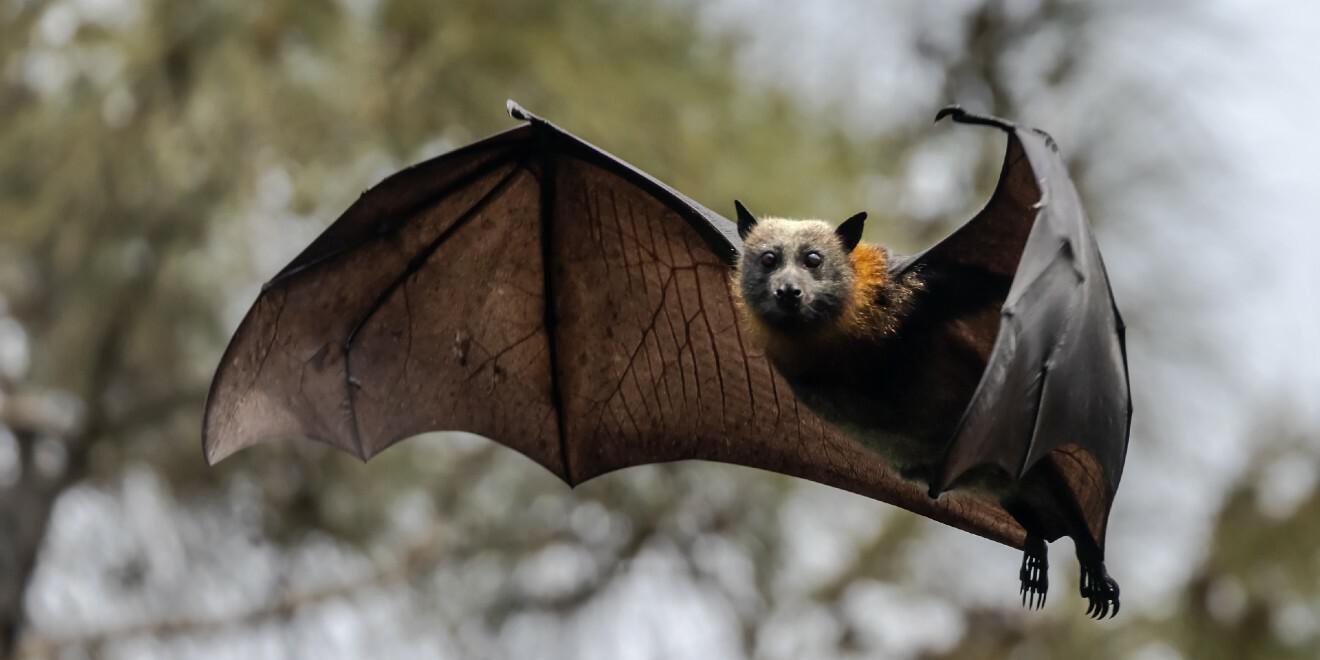Interesting Bat Facts for Bat Appreciation Month
Posted by Mosquito Squad
October 1, 2024

October is Bat Appreciation Month in the United States. Of course, you’ll find bats active somewhere in the world at any time of year. So, we think they’re worth celebrating anytime – especially because they eat mosquitoes.
To help you celebrate bats with us, here are some fun bat facts we hope you’ll enjoy ...
First How Many Species of Bats Are There?
There are more than 1,400 species of bats living on every continent except Antarctica. There’s so much physical variation in all these species: The smallest bat, The Kitti’s Hog-nose Bat (also known as the bumblebee bat), has a two-inch wingspan and weighs less than a penny. This tiny bat lives in the caves of western Thailand and southeastern Myanmar. The largest bat is the Giant Golden-crowned Flying Fox. It lives exclusively in the Philippines and has a wingspan of up to six feet! Here in the US, there are as many as 40 species.
What Is a Group of Bats Called?
Many collective nouns apply to a group of bats. A resting group of bats can be called a camp, colony, or cluster. A flying group of bats can be called a cloud, flock, swarm, or cauldron.
Is a Bat a Mammal?
Yes! Not only are bats mammals, but they’re the only mammals capable of true sustained flight. Like other mammals, bats have live young (aka, pups) and feed them milk, not adult food. They also have belly buttons! Female bats don’t have pups until they are two years old. They will typically have only one or two pups a year.
How Long Do Bats Live?
A bat’s average maximum lifespan is typically 17 years. However, research has documented six species that live more than 30 years. The longest recorded lifespan was 41 years.
Why Do Bats Hang Upside Down?
Bats hang upside down to let gravity help them accelerate for flight when they let go of their perch. This assistance is important because bats don’t have hollow bones like birds.
Don’t worry; it’s not uncomfortable. Bats have special tendons on their feet which clench when they relax. Their bodies also feature vascular valves that keep their blood flowing correctly upside down.
How Fast Are Bats?
Most western bats fly between ten and fifteen miles per hour. The fastest species, the Brazilian free-tailed bat has been recorded moving 100 miles per hour during short bursts of speed. Free-tailed bats are also known for their record-setting colony size. A Mexican free-tailed bat colony near San Antonio, Texas, has been documented to have as many as 20 million bats! That’s a lot of very fast bats.
Bat Diet Facts: Do Bats Drink Blood?
Of the more than 1,400 species of bats, only three drink blood. Most eat fruit or insects. A few drink nectar from plants, helping to pollinate them. Some of these nectar-feeding bats have tongues as long as their bodies. (Over 300 species of fruit depend on bats for pollination or seed-spreading. Around 80 medicinal plants also rely on bats for their survival.)
How Many Mosquitoes Do Bats Eat?
Not all bats eat mosquitoes. Of the species that do, some eat as much as half their body weight in mosquitoes overnight, which is around 10 mosquitoes per minute. Pregnant bats can eat up to their entire body weight in mosquitoes in one night.
Scientists estimate bats save farmers $23 billion a year by reducing crop-damaging insects and decreasing crop treatment needs.
Amplify Your Natural Mosquito Control
We hope your bat appreciation month is more enjoyable with these fun facts about bats. If you’re lucky enough to have bats where you live, you can pair their natural mosquito control with ours. Our non-toxic, non-synthetic treatment effectively helps control up to 85%-90% of mosquito populations while your winged friends will gladly help with the rest.
Contact the Squad today at (877) 332-2239 or request a free quote online for natural mosquito treatment.
